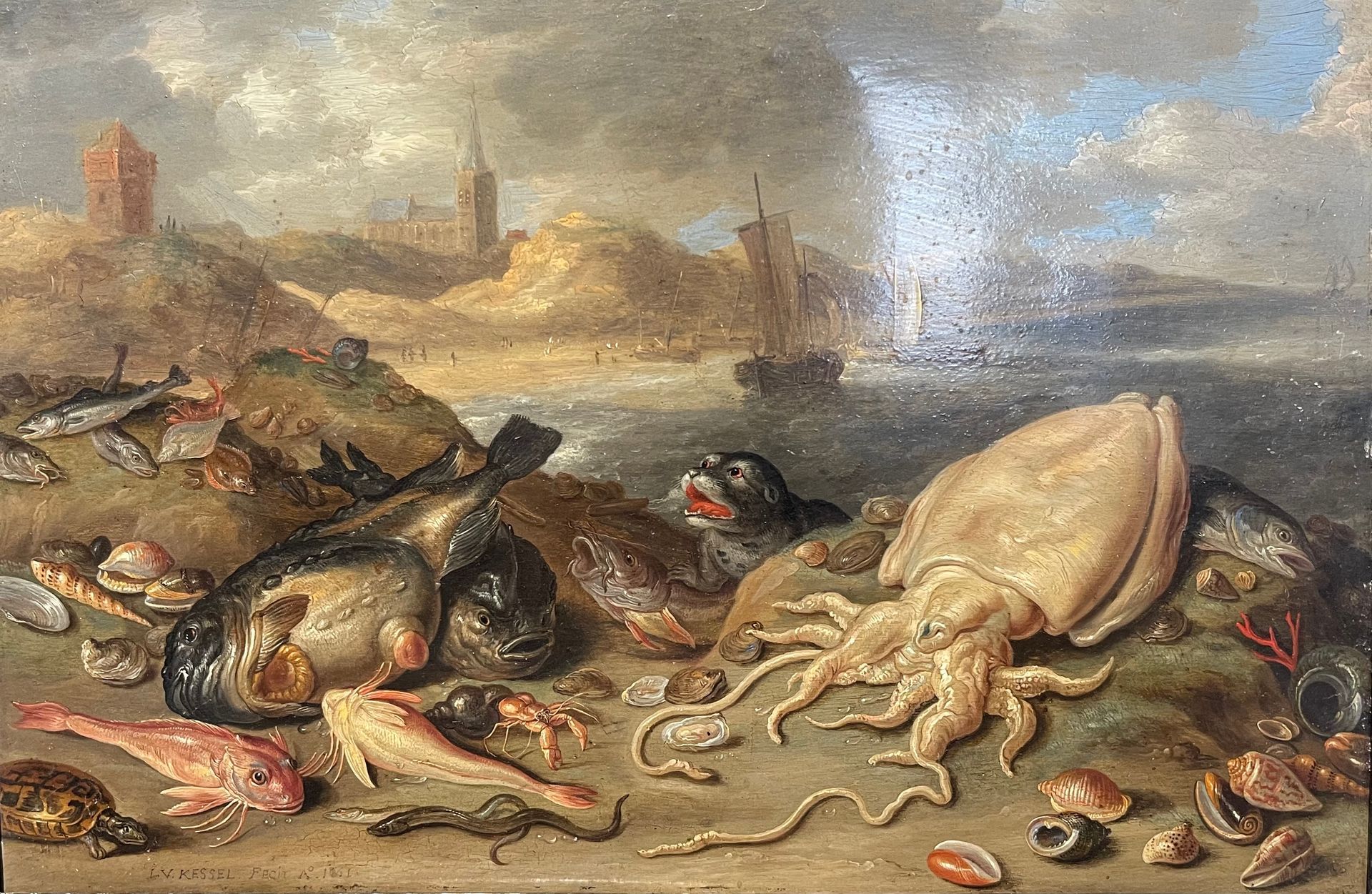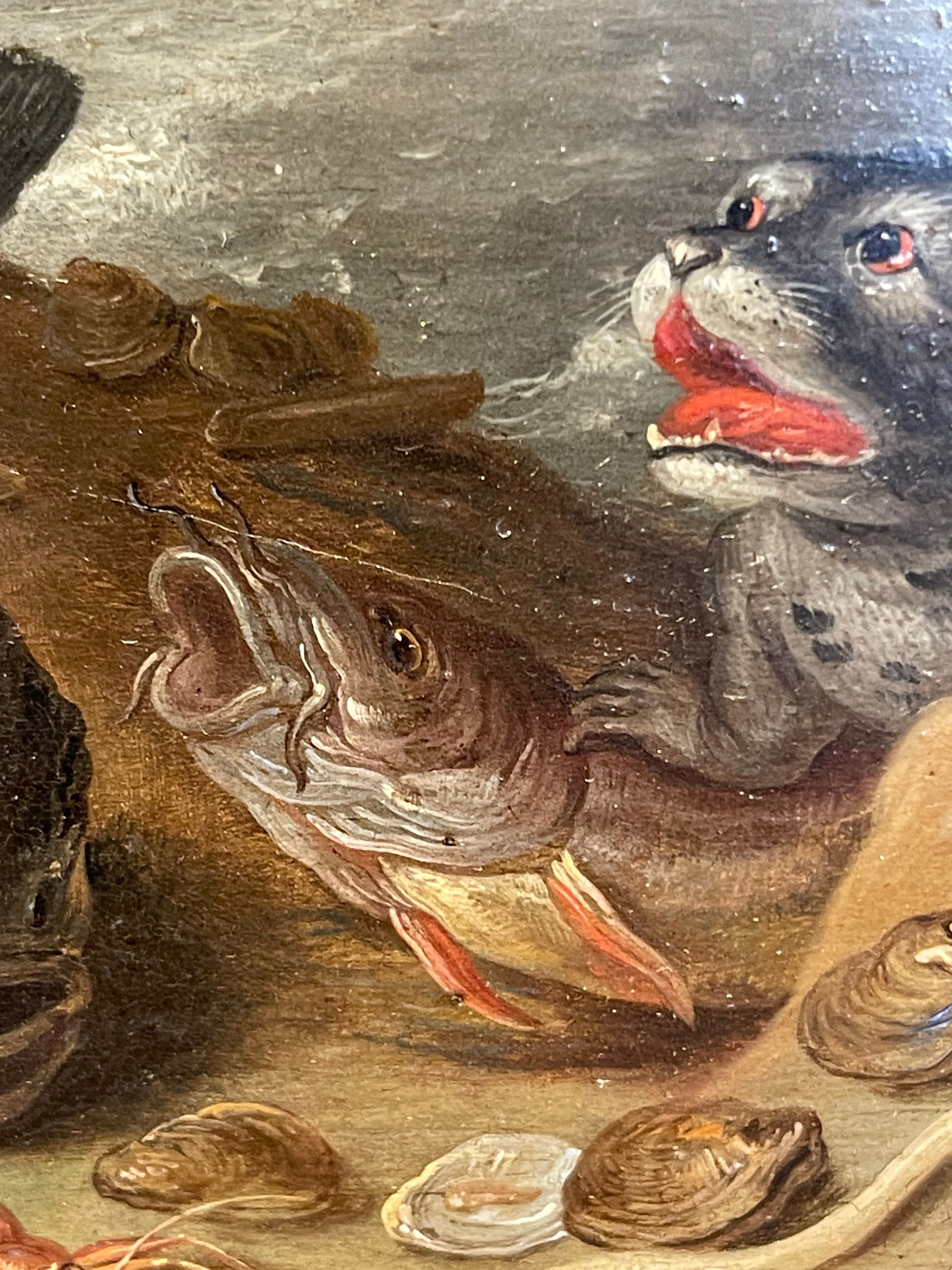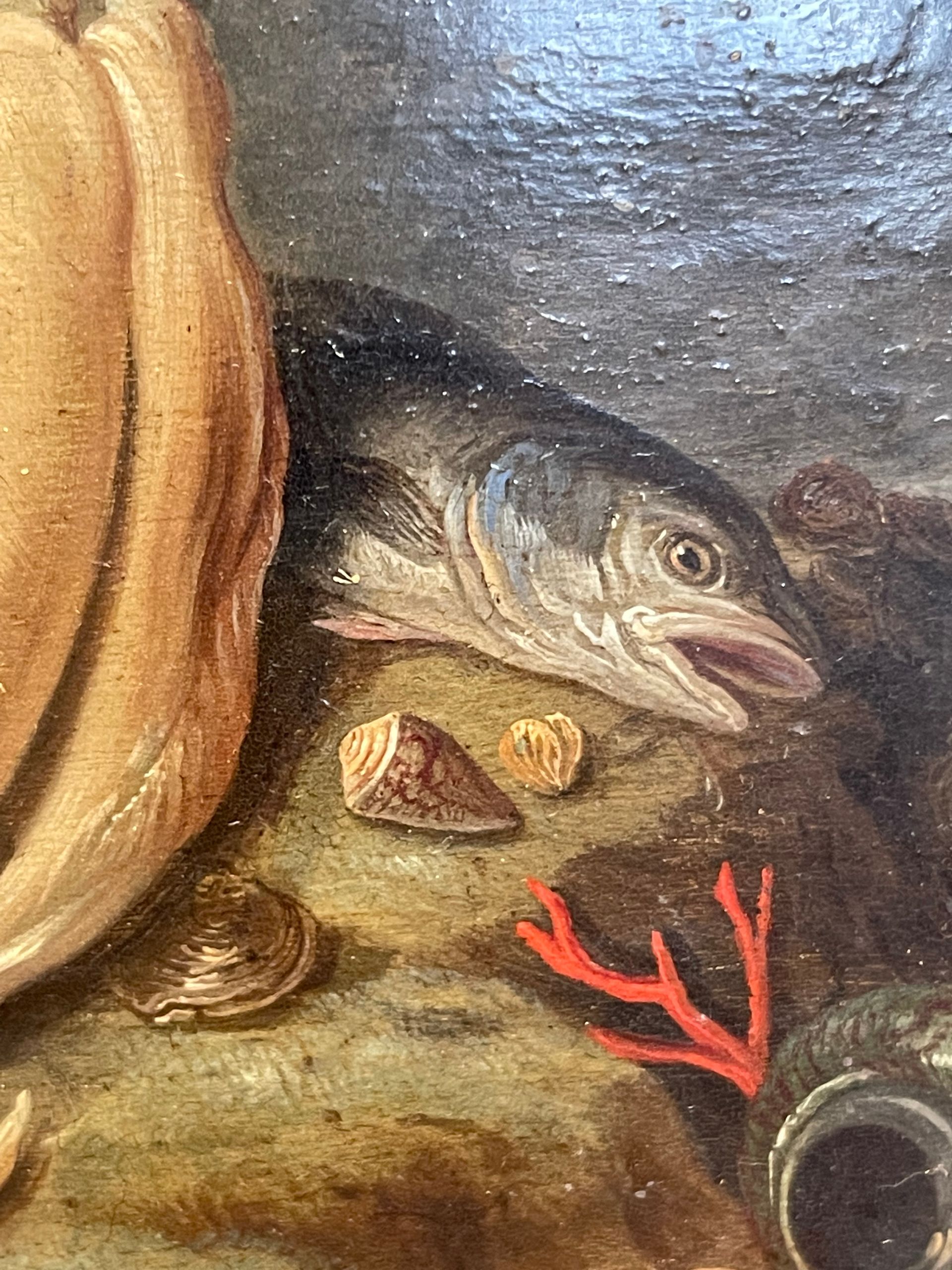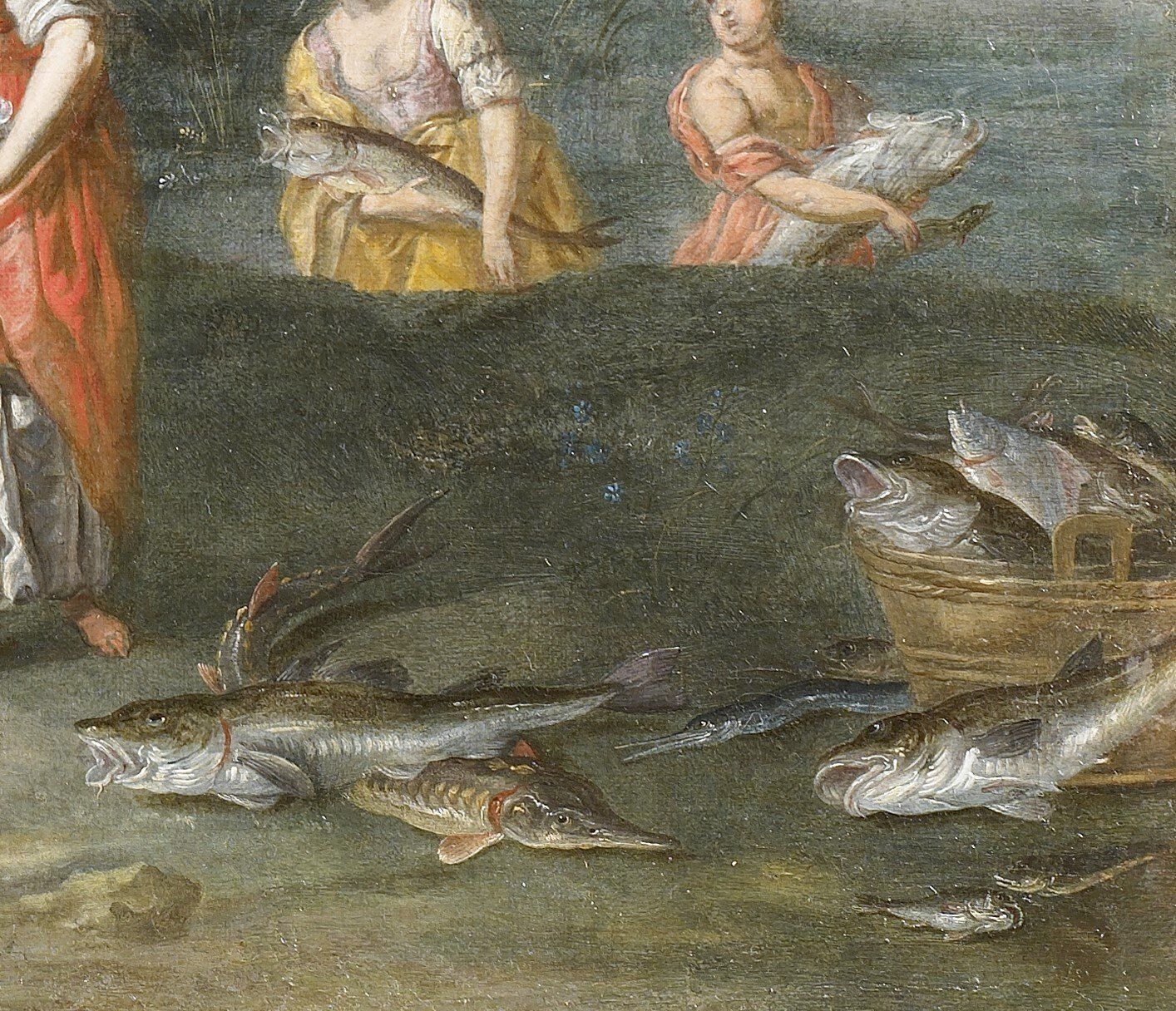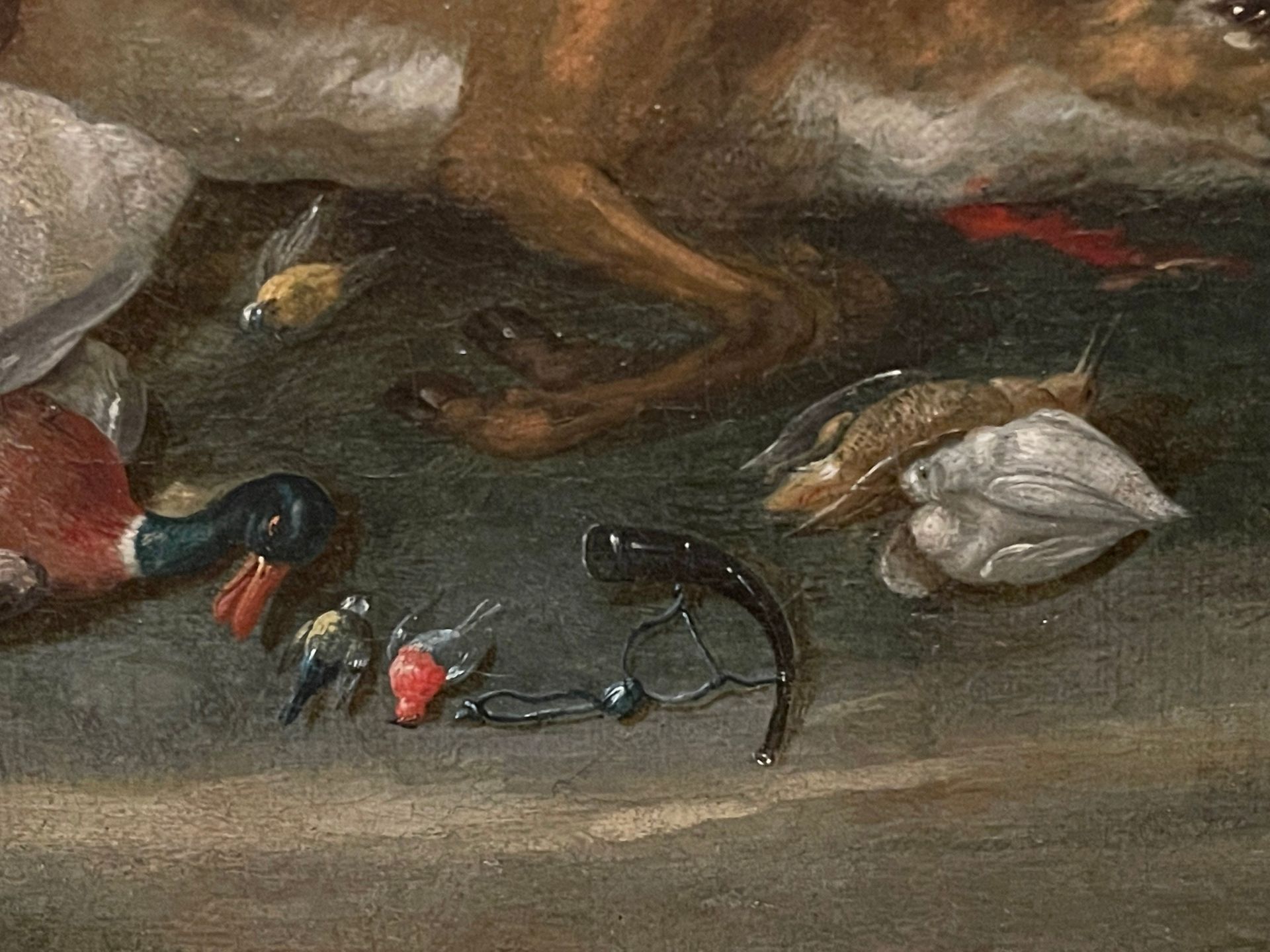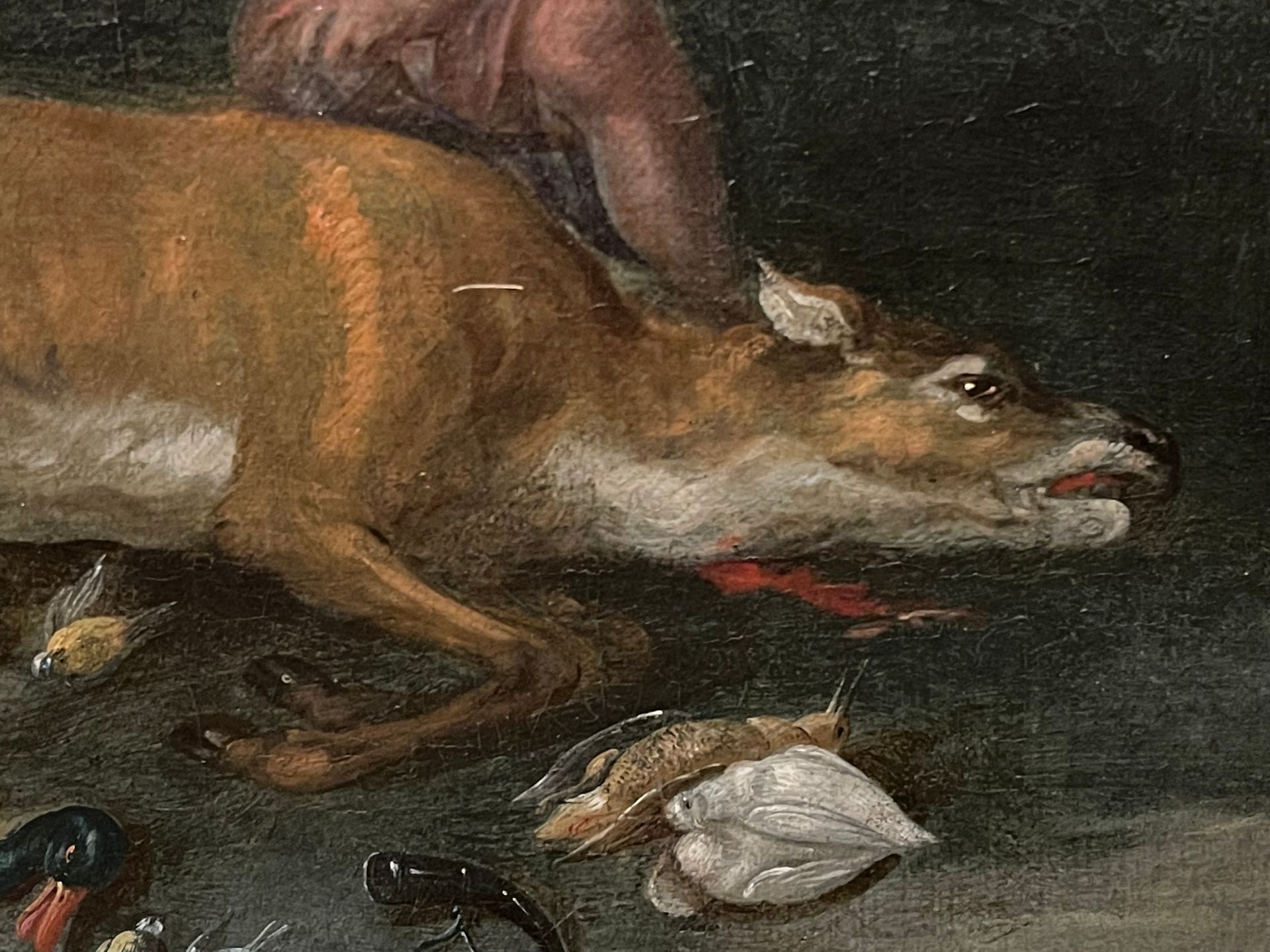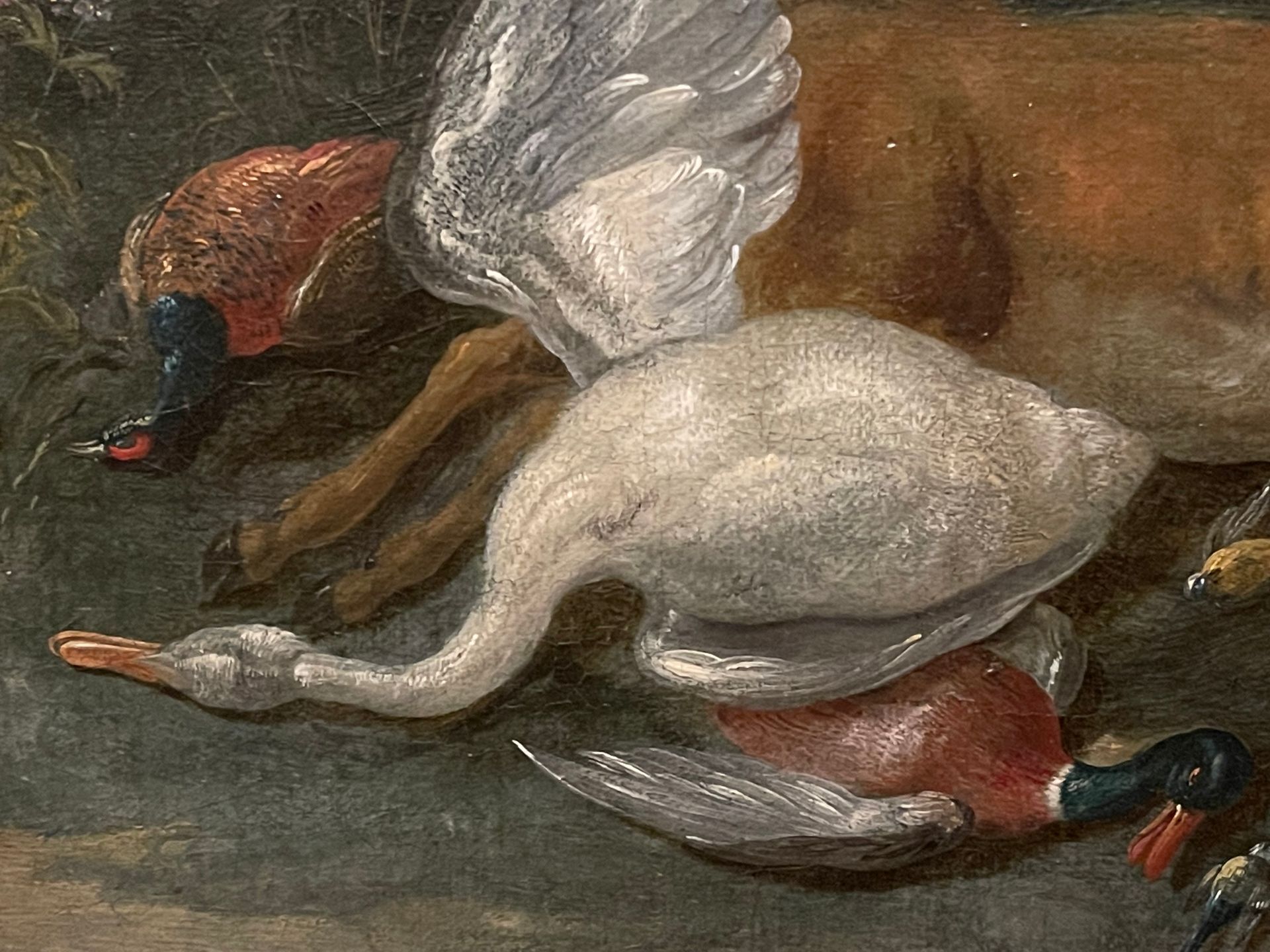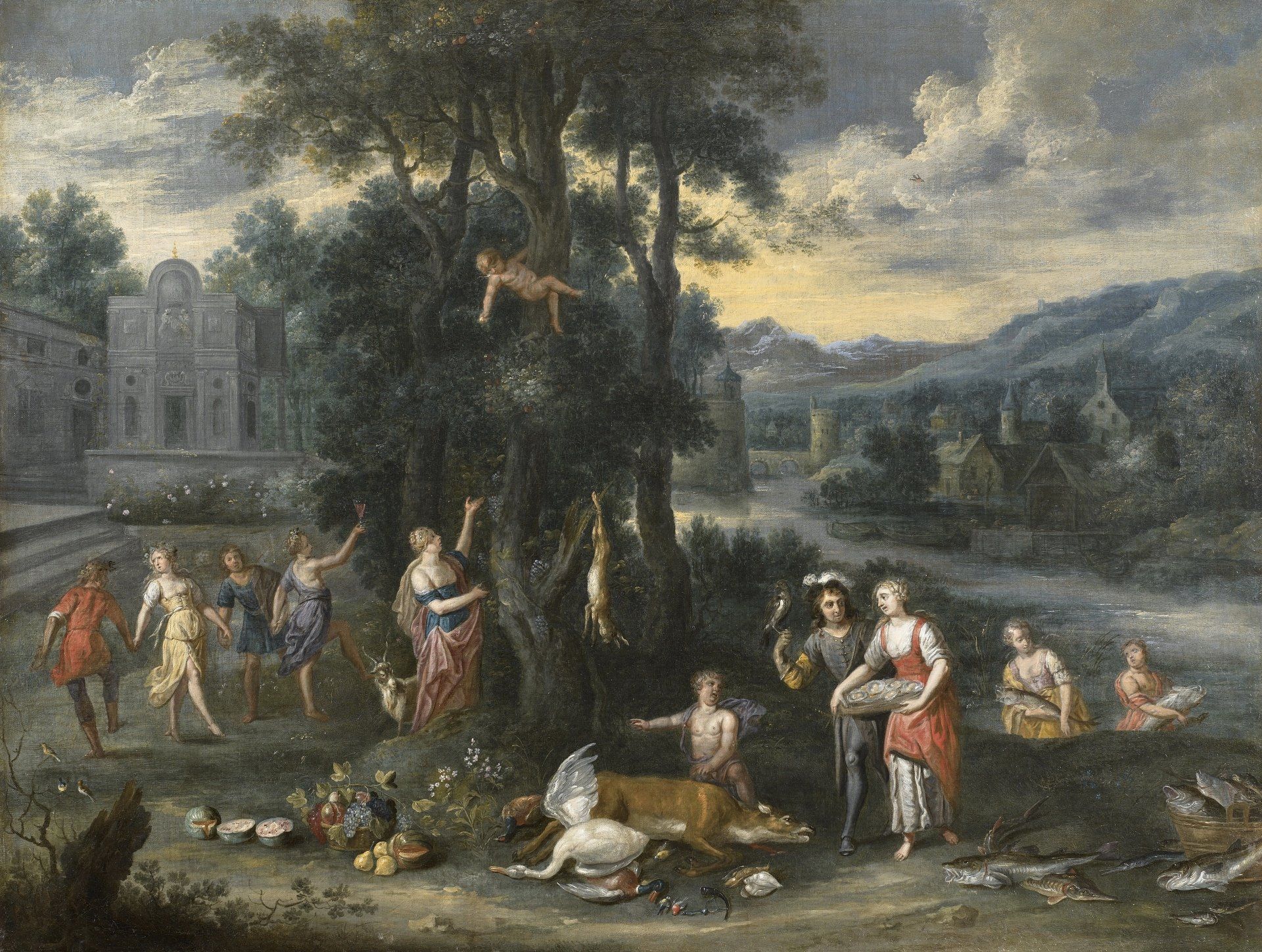
Abraham WILLEMSENS (Anvers 1614 – 1672) and Jan Van KESSEL I (Antwerp 1626 - 1679)
Circa 1650-1659
Allegory of Autumn
Oil on canvas (Relined)
89 x 117 cm. (2 ft. 11 in. x 3 ft. 10 1/16 in.)
PROVENANCE
- Private collection Sweden until 2010;
- Dorotheum Vienna sale of April 18, 2012, lot 00571 like Jan van den Hoecke and Ferdinand van Kessel;
- Acquired by the current owner.
DESCRIPTION
Landscape with architecture and figures; the return from the hunt, fishing, the farandole, with fruit still life and animals in the foreground; on the left, watermelon, pears, and gourds; pomegrenate, peaches, and grapes in the basket; in the center, doe, swan, hare, pheasant, duck, woodcock, bullfinch, bunting, dead doves, and falcon; on the right, sturgeon, cod, plaice, garfish, and oysters.
The subject of our painting, an Allegory of Autumn, which displays Nature’s natural abundance before the onset of winter. Birds, wild game, fish, shell fish, fruit and gourds are cause for celebrating all that can be gathered from air, forests, rivers, and the land. As hunting was a major autumnal activity, the animals portrayed were especially prized prey.
THE ARTISTS
Abraham Willemsens, painter of religious, mythological, and genre scenes. In 1627/28 he became a pupil of Gilliam Antonissens in Antwerp. He married Maria de Lang (d. 1678). He was elected dean of the Antwerp guild of St. Luke and was recorded in Paris c. 1645. Willemsens painted numerous decorative landscapes on copper, animated with religious scenes and signed "A. W.IN.F." Figures and landscapes were executed by different hands. The figures derived from those of P.P. Rubens, G. Seghers, H. van Balen and Frans Francken the younger. Most of this production is today in Spanish hands. The painter and his studio worked for exportation, and his name was recorded in the archives of the Antwerp merchant W. Forchondt in 1669 [i].
Paintings of another Antwerp painter, Adriaen Willemhoudt, have wrongly been given to Willemsens (Jan De Maere and Marie Wabbes, 2003, Nr. 27 and Jahel Sanzsalazar, 2008). The reason was not that much stylistically, but rather because of his monogram that reads
A.W., and because he also worked for the Forchoudt firm.
Abraham Willemsens and Jan van Kessel I will have collaborated, traces of payments exist between them (Musson's day book, end of 1658), see the publication by Gregory Martin in Apollo of February 1993, p. 98.
Paintings of another Antwerp painter, Adriaen Willemhoudt, have wrongly been given to Willemsens (Jan De Maere and Marie Wabbes, 2003, Nr. 27 and Jahel Sanzsalazar, 2008). The reason was not that much stylistically, but rather because of his monogram that reads A.W., and because he also worked for the Forchoudt firm.
Jan Van Kessel came from a long family of famous painters. Descended from Jan Brueghel the Elder – the flower painter, - he was the nephew to Jan Brueghel the Younger and of David Teniers the Younger, who in addition to other genres, painted still lifes. His son, Ferdinand Van Kessel, continued the tradition. Jan Van Kessel produced especially veristic botanical and zoological depictions of flowers, fish, shellfish, and insects which were extremely precise in their execution and appeared both in large scale and miniature works.
THE WORK
Compositions depicting allegories of the seasons were dear to Antwerp collectors and often the result of collaboration between specialized painters, so as to guarantee the purchaser would have the highest degree of perfection in all aspects of the picture. In Allegory of Autumn, a collaborative work, the very recognizable figures correspond to those of Willemsens which we find in several of paintings monogrammed A.W and the still lifes to whose of works signed Jan van Kessel I. We also finds this sky at Van Kessel I, but also at David Teniers the younger.
The works of Jan Van Kessel I reveals many similarities with the still lifes in our picture, which tends to confirm that the fish, shell fish, and still lifes come from his hand. Concerning the fish on the right of our composition, each individal fish is directly comparable in style, quality of execution, and handling to several signed works by Jan van Kessel; the manner of the sky is also comparable to small coppers by Van Kessel, especially the Fish Still Life sold by Sotheby’s, London, July 6th 2006, lot 116 (fig. 1) and the one sold in Paris, Ader, December 2th 1959, lot 25 (fig. 2) and finally another sale, Sotheby's, Paris, June 13th, 2023, lot 13 (fig.3).
FIG. 1. © Sotheby's
Jan van KESSEL I
A Sturgeon and Thornback Ray with Cod, Oysters, Mussels and Other Fish on a Seashore, a Ship in the Distance
Signed
Oil on copper
16.5 x 22.5 cm. (6 ½ in. x 8 7/8 in.)
Sotheby’s London, July 6th, 2006, lot 116
Fig. 2. © ADER, Paris
Jan van Kessel I
Fish and Shellfish on a shore
Signed on the left
Oil on metal
18 x 25 cm. (7 1/16 in. x 9 13/16 in.)
Sale Drouot Me. Ader, December 2nd, 1959, lot 25.
FIG. 3. © Sotheby's
Jan van KESSEL I
Paysage côtier avec phoques et calmars
Signed and dated 1661 lower left
Oil on cooper
20,5 x 30,2 cm. (8 1/8 in. x 11 7/8 in.)
Sotheby's, Paris, 13 juin 2023, lot 13.
Two other paintings can also be cited in relation to Jan van Kessel:
- Jan van Kessel, A Still Life of Fish on a Beach, signed J. V. Kessel. Fecit,1660, oil on copper, 19.5 x 29 cm. (7 11/16 x 11 7/16 in.) Sotheby’s London, April 16th, 1980, lot 43;
- Jan van Kessel, signed and dated 1675, Seascape with Fish, oil on copper, 34 x 22 cm. (13 3/8 x 8 11/16 in.) exportation to Germany, October 1943, Louvre document.
[i] J. De Maere & M. Wabbes, Dictionnaire illustré des peintres flamands du XVIIème siècle, 1994, La Renaissance du livre, tome textes, page 43
PHOTOGRAPHS' DETAILS




